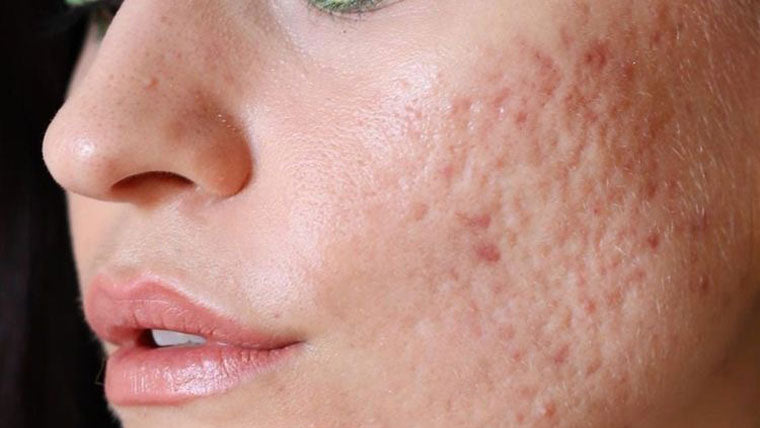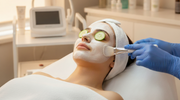How to Treat Acne Scars for Clearer Blemish Free Skin

| How to treat acne scars for clearer blemish free skin has been the #1 question in the Indian Community. Acne lesions (pimples) are an annoying skin condition occurring when hair follicles become clogged with oil and dead skin cells. Types of acne include blackheads, pimples, and whiteheads. It’s a common condition amongst teenagers but can also affect adults of any age. |
Acne breakouts are bad enough, but most sufferers also have an issue with the marks and scars acne leaves behind. Acne scars are a significant concern for many people, as they are often visible for years after the initial outbreak.
Fortunately, you don’t have to forever live with evidence of your past pimple outbreaks. Keep reading to learn more about how acne scar treatments from a skilled dermatologist can help you reduce the appearance of acne scars and give you the blemish-free skin you deserve.
What Are the Different Types of Acne Scars?
Acne scars form when a breakout penetrates deep into the skin to damage the tissues underneath. Understanding the type of scars you are treating is crucial, as different treatments will work better on different types of scars.
Skin tone is also a factor. For example, laser treatments that penetrate deep into the skin are not recommended for darker tones as there is a high chance of pigmentation and further scarring. Most dark skin treatments will use a 4-percent hydroquinone bleaching cream with peels, lasers, and micro needling to make blemishes less noticeable.
The discoloration left behind after a pimple has cleared is not a scar because the brown, purple, or red marks will disappear on their own after a few months. However, acne breakouts can leave behind one of three main scar types: Boxcar, Ice pick, or Rolling.
1. Boxcar Acne Scars
There are two types of boxcar scarring: shallow atrophic scarring or deep depressed scarring.
The shallower the scar, the better it will respond to resurfacing treatments, with microdermabrasion and gentle peels working well for almost all skin types.
Due to the possibility of increased scarring and pigmentary changes in dark skin tones, laser resurfacing treatments must be performed cautiously.
2. Ice Pick Acne Scars
An ice pick acne scar is a depressed scar given its name because of its narrow V-shape. They can also look like small holes resembling chickenpox scars. These acne scars are some of the most challenging to treat because of the depth they penetrate the skin. They also occur most prominently on the forehead and upper cheeks, which makes them highly visible.
3. Rolling Scars
Rolling scars are a type of atrophic acne scar that appears as an indent in the skin when it cannot regenerate enough tissue during the healing process. The scars develop as wide depressions, usually featuring rounded edges that give them an irregular, rolling shape.
How a CO2 Laser Can Help Reduce Acne Scarring
Acne leaves some type of scarring in more than 95 percent of people. CO2 laser treatments for acne scars can help minimize the prominence of raised scars like boxcar scars.
Light from a laser focuses on the top layers of the skin to break up the scar tissue so new, healthy skin can take its place. It’s impossible to remove all traces of scarring from acne. However, a CO2 laser can significantly diminish the appearance of an acne scar and reduce or eliminate the pain they often cause.
Laser treatment may not be the best option for very wrinkly skin or darker skin tones, so always check in with your dermatologist when considering CO2 laser treatment for acne scarring.
How Does CO2 Laser Treatment Work with Acne Scarring?
A CO2 laser uses short pulses of light, referred to as ultra-pulses, that are applied as a scanning pattern to remove the outer layers of the scar tissue.
There are two layers to treating acne scars with a CO2 laser. First, the heat from the laser burns off the top layer of scarred skin. Second, multiple microthermal zones penetrate deep into the layers to stimulate the healing process, increase collagen production, and promote the growth of healthy new skin cells. The laser treatment significantly reduces the height of the raised scar to make your skin appear smoother.
Preparing for Acne Scar Laser Treatment
Before you go in for laser treatment, you should follow a few pre-treatment recommendations to ensure the best results:
Talk to your dermatologist to see if you are a good candidate for laser treatment
Avoid lengthy sun exposure at least two weeks before treatment
Stop taking pain medication or supplements containing ibuprofen, aspirin, or vitamin E, as these can prevent clotting
Recovering From CO2 Laser Acne Scar Treatment
Healthy tissues form quickly due to the microthermal zones, so recovery time after laser treatment is relatively short. Most patients fully recover in 5 to 7 days. Use sunscreen to protect your skin during recovery, switch to a gentle cleanser and moisturizer morning and night and avoid wearing makeup. You can talk to your dermatologist, who can recommend suitable products.
An ice pack may relieve some swelling during the first 24 to 48 hours after treatment. Use ointment only when necessary to prevent scabs from forming. Reduce the chance of infection by avoiding workouts at the public gym and swimming.
How Many CO2 Laser Treatments Will it Take?
How many laser treatments you need will depend on the severity of your acne scarring, but most people will only require two or three sessions, performed in six weekly intervals.
What is Microneedling Radio Frequency Treatment & How can it be used to treat Acne Scars for Clearer Blemish Free Skin?
Microneedling radiofrequency treatment is a minimally invasive cosmetic procedure that uses tiny needles to create controlled injuries to the skin. The small wounds trigger the body’s natural healing response, which produces new collagen and elastin in the treated area.
Microneedling procedures work best for pitted scarring like rolling and ice pick acne scars, as the extra collagen helps to plump and flatten the skin in the depressed area.
Using Subcision to Treat Acne Scars to treat Acne Scars.
Subcision is an effective treatment for ice pick and rolling scars due to the fibrous collagen strands tethering the scar and pulling it down towards the tissues underneath.
A subcision treatment cuts the tethers to allow the surface skin to rise up to give it a flatter, smoother appearance. The treatment may also trigger the wound healing process to fill the area with new collagen.
Acne scars will need a series of subcision treatments to be effective, with most patients experiencing a 10 to 50% improvement in skin appearance after each treatment.
Most people will recover quickly from a subcision treatment and can return to work or their usual routine the next day. Some may experience a puffy face for a day or two, which can take 5 – 7 days to settle fully.
TCA CROSS Treatment for Treating Ice Pick Scars to Treat Acne Scars and get Clear Blemish Free Skin.
TCA CROSS stands for TriChloroacetic Acid Chemical Reconstruction of Skin Scars. It’s a suitable acne treatment for deep atrophic scars like ice pick scars. When performed by a specialist, TCA CROSS results are permanent, which is a significant advantage.
A dermatologist applies a strong acid to the bottom of the scar to break down scar tissue and denature the existing collagen to promote new tissue development that will raise the scar. When the scar reaches a suitable height above the surface, further treatment with a CO2 laser resurfaces the skin.
Each treatment session will improve scarring by around 20 to 30%, so it will take 3 or 4 treatments over a few weeks to fully remodel an ice pick scar.
The Importance of PRP in Acne Scar Treatment
PRP (Platelet Rich Plasma) is a relatively straightforward procedure that uses your blood to create a serum a dermatologist injects underneath the scar to stimulate a new layer of collagen and elastin and reduce the appearance of acne scarring.
Platelets in our blood contain several beneficial elements that stimulate collagen growth and elastin to regenerate the skin. Dermatologists often use PRP in addition to other acne scar treatments, so patients achieve the best possible results for reducing their appearance.
Using the Dermapen 4 on Your Acne Scars
Like many other acne scar treatments designed to trigger the healing process, a Dermapen creates tiny punctures or wounds that trigger collagen production. The breakdown of fibrosis in conjunction with collagen production introduces new, blemish-free skin to the area.
The latest Dermapen 4 can create millions of tiny channels more than 100% faster than other microneedling pens. Treatment is a lot more comfortable than many other types of acne scar treatment, and the Dermapen is also capable of delivering topical nutrients deeper into the skin that assist the healing process.
A significant advantage of Dermapen microneedling is that high treatment localization reduces the collateral damage other types of treatment do to the area surrounding the acne scar. The repair process is therefore highly focused on healing only the scarred area, which can significantly reduce recovery times.
The number of Dermapen 4 sessions you will need will depend on how severe your acne scarring is, but even severe cases require just 5 to 6 sessions over a 5 – 6-month period. Most people will notice a reduced appearance of acne scars by at least week 6.
Sarinskin Is Here to Help
By reducing the appearance of acne scars, you can achieve healthier, more youthful-looking skin and an extra boost in self-confidence. Book a consultation today to learn more about the best types of acne scar treatment for your skin, regardless of the scarring type or your skin tone.


